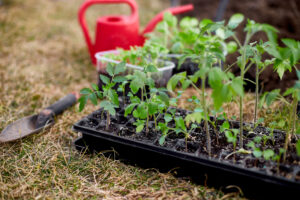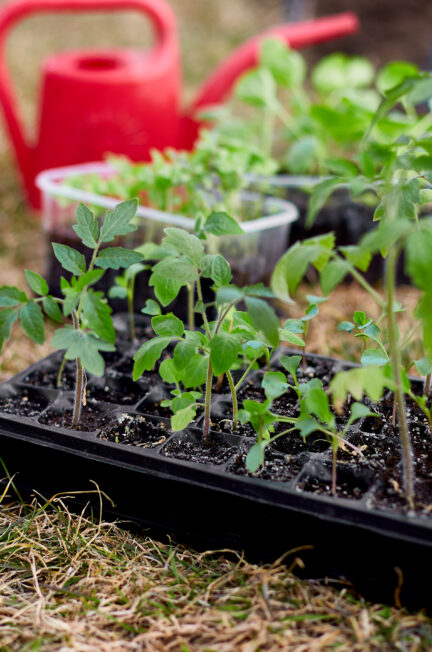
Vegetable Gardening.
All of the basics for those that know nothing… like me
It’s springtime here in southern MN, which means we are thinking about planting our gardens! I myself, have been trying to figure out what I want to plant for the year and the best way to utilize a space. This year, I want to focus on the staples, the vegetables!
We put a lot of work into gardening in hopes of a great yield at the end of the season, but when we struggle with factors such as pests or blite, it can really ruin the experience.
Now, I know that a lot of our readers may find this mundane and already know everything there is to know about vegetable gardening, but for those new to gardening, you may find the whole process overwhelming. What varieties do you plant? When do you plant them? How far apart? Can you plant tomatoes where you’ve planted potatoes previously? There are so many questions.
I’ve done a bit or research and put together some basic facts for our favorite garden veggies.
Tomatoes
– Best Varieties: Consider planting ‘Brandywine’, ‘Early Girl’, or ‘Celebrity’ for reliable yields in southern MN.
– Planting Tips: Start seeds indoors 6-8 weeks before the last frost, transplant after temperatures consistently stay above 60°F. Plant tomatoes 18-24 inches apart, providing good airflow to prevent disease.
– Diseases: Look out for blight, blossom end rot, and spider mites. Rotate crops to avoid soil-borne diseases and remove any infected plants promptly.
– Companion Planting: Good companions include basil, marigolds, and onions. Avoid planting near potatoes to reduce the risk of blight.
Green Beans
– Best Varieties: ‘Blue Lake’ and ‘Kentucky Wonder’ are excellent choices for both bush and pole varieties.
– Planting Tips: Sow seeds directly into the soil after the last frost, ensuring the soil is at least 60°F. Space seeds 1-2 inches apart in rows 12-36 inches apart.
– Diseases: Watch for rust, anthracnose, and bacterial blight. Practice crop rotation to minimize disease pressure.
– Companion Planting: Corn and squash make great companions. Avoid planting near onions and garlic.
Potatoes
– Best Varieties: Consider ‘Yukon Gold’, ‘Red Norland’, or ‘Kennebec’ for good yields in southern MN.
– Planting Tips: Plant seed potatoes 4-6 inches deep in rows 30-36 inches apart. Cut seed potatoes into pieces with at least one “eye” each and let them cure for a day or two before planting.
– Diseases: Be cautious of blight, scab, and aphids. Rotate potatoes out of a bed for at least 3 years.
– Companion Planting: Plant with beans, corn, and cabbage. Avoid planting near tomatoes and other nightshades.
Cucumbers
– Best Varieties: ‘Marketmore’ and ‘Diva’ are ideal for southern MN, known for their hardiness and good flavor.
– Planting Tips: Sow seeds directly after the last frost when soil is warm (at least 70°F). Space seeds 12 inches apart in rows spaced 3-4 feet apart.
– Diseases: Powdery mildew and cucumber beetles are common. Use mulch to retain moisture and create a good growing environment.
– Companion Planting: Plant cucumbers with corn, radishes, and beans. Avoid planting near potatoes and sage.
Helpful Tips for Crop Rotation – Vegetable Gardening
– Crop Rotation Importance: Always practice crop rotation to help prevent soil-borne diseases and pests specific to certain plant families.
– General Rule: Avoid planting the same family of plants (like nightshades or legumes) in the same spot for at least 2-3 years.
– Example: If you plant tomatoes in a bed one year, try planting beans or cucumbers the following year instead of planting tomatoes again or even other nightshades like peppers or potatoes.
Although this is a lot of great information, I still get overwhelmed when figuring out what to plant and where. I decided to type in a bunch of promps into an online AI service- CoPilot, to see if it could help me- or completely do the work for me when deciding what to plant where. I plan on purchasing some 2’x8’ raised beds for the spring so I started off with telling it my planting space and asking it to use the square foot planting method. I typed in the vegetables I want to plant, what zone I live in, and about how many of each plant I want to yield. With a click of a key, Copilot generated an entire planting schedule for my four planter boxes, including when to plant.
We will see how gardening goes this year with all of this planning. Happy planting everyone! (Vegetable Gardening)

